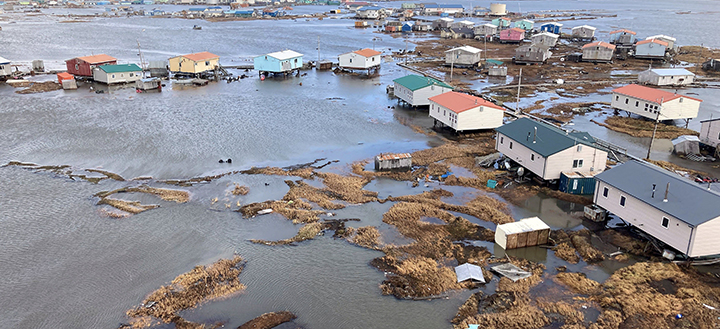Flooding remains one of the most costly and frequent natural disasters globally, posing significant challenges for communities, governments, and businesses. To combat the risks effectively, the role of a Certified Floodplain Manager (CFM) has become integral.
Whether you’re an emergency manager, government official, or someone passionate about floodplain management, obtaining a CFM certification signifies expertise, resilience, and leadership in this critical field.
This guide explores the certification process, its benefits, and the steps required to become a CFM.
What is a Certified Floodplain Manager?
A Certified Floodplain Manager (CFM) is a professional who has demonstrated expertise in floodplain management by meeting the standards established by the Association of State Floodplain Managers (ASFPM).
A CFM plays a crucial role in preventing flood-related damage through planning, education, and efficient flood mitigation strategies. The certification validates the skills necessary to handle the complex challenges of floodplain management, providing communities with a safer and more sustainable environment.
Why is it Important?
- Credibility: Certification provides recognition of professionalism and competence in the field of floodplain management.
- Preparedness: CFMs are well-trained to anticipate and mitigate flood risks, saving communities from unnecessary economic and environmental harm.
- Compliance: CFMs ensure adherence to laws and regulations, particularly National Floodplain Insurance Program (NFIP) requirements.
Benefits of Becoming a Certified Floodplain Manager

Attaining the Certified Floodplain Manager (CFM) designation comes with numerous benefits, including:
Improved Career Opportunities
Many governmental and private organizations prioritize hiring CFMs due to their technical knowledge and credibility in this field.
Strengthened Expertise
The certification empowers professionals with advanced training in flood prevention and mitigation techniques, preparing them for real-world challenges.
Nationwide Recognition
The CFM certification is recognized across the U.S., granting managers a respected credential within the floodplain management sector.
Community Impact
CFMs help reduce flood risks, protect lives, and minimize economic losses in their communities.
Ongoing Professional Development
CFMs maintain certification through Continuing Education Credits (CECs), keeping them informed about the latest technologies, strategies, and regulations.
The Association of State Floodplain Managers (ASFPM) and the CFM Certification
The Association of State Floodplain Managers (ASFPM) is the governing body of the Certified Floodplain Manager (CFM) program and administers it nationwide.
As the governing authority, ASFPM sets standardized practices for the consistent implementation of the certification. The organization also develops policies and guidelines for effective floodplain management while advocating for stronger national programs to mitigate flood risks.
How the ASFPM Supports Floodplain Managers
ASFPM supports floodplain managers by providing a wealth of CFM training resources, including webinars, the Flood Science Center, and the ASFPM Library.
It connects professionals through nationwide peer networks, encouraging collaboration and knowledge-sharing. The association organizes major events, such as the ASFPM National Conference, to promote education and networking.
ASFPM works closely with federal agencies like FEMA to ensure the CFM curriculum meets national standards, helping floodplain managers stay informed and prepared.
The association also collaborates with state chapters, like the Texas Floodplain Management Association (TFMA), to support professionals in maintaining their certification and addressing state-specific governance and disaster risk management.
Steps to Getting the Certified Floodplain Manager Certification

Below are steps to obtain the Certified Floodplain Manager (CFM) certification:
Step 1: Understand the Certification Process
While ASFPM does manage the CFM Certification Program, some states may also have supplemental certification pathways tailored to regional floodplain challenges, managed by local chapters.
Arkansas, Illinois, New Mexico, North Carolina, Oklahoma and Texas are specific states to keep in mind for additional steps or processes.
Step 2: Meet Eligibility Criteria
Before applying, candidates must demonstrate a baseline knowledge of floodplain management concepts.
ASFPM’s Certification Board of Regents recommends CFM exam candidates have at least one or more of the following:
- A minimum of two years of full-time floodplain management experience
- A higher education degree in a related field
- Completed the 273 Managing Floodplain Development through the National Flood Insurance Program (NFIP) course
Candidates typically have backgrounds spanning local governments, environmental engineering, or disaster recovery.
Step 3: Complete CFM Training
To prepare for the CFM exam, candidates are encouraged to utilize ASFPM’s resources, FEMA courses, and local workshops.
Topics covered on the CFM exam will include:
- Floodplain Mapping
- NFIP Regulatory Standards
- Regulatory Administrative Procedures
- Flood Insurance
- Flood Hazard Mitigation
- Natural and Beneficial Functions
- Overall context of Floodplain Management
Candidates are encouraged to explore ASFPM’s CFM Exam Study Course and the Floodplain Management Body of Knowledge for targeted preparation.
Step 4: Register for the CFM Certification Exam
Register for the exam by downloading and returning a completed CFM application through ASFPM or an accredited state association.
Candidates will need to pay an application fee, which varies by location. As of 2025, the fee schedules for non-ASFPM members are the following:
- Application, Processing, and Digital Exam: $565
- Digital Exam Retake Fee: $85
- Biennial Renewal Fee: $500
- Late Renewal Fee: $75
Step 5: Pass the CFM Exam
The CFM Exam evaluates a candidate’s understanding of floodplain regulations, mitigation strategies, and risk management.
To pass the exam, candidates will need to score at least 84 correct answers out of 120 questions, or 70% overall. The exam has a 3-hour time limit and is currently offered in-person or digitally.
Pass/fail results are provided immediately on-screen after finishing the exam.
Step 6: Maintain and Renew the Certification
Upon passing the exam, the candidate earns the CFM credential, which is valid for two years.
The candidate will need to maintain and renew this certification via the following:
- Earn 16 Continuing Education Credits (CECs) within two years by attending approved workshops, conferences, or online CFM training.
- Renew certification annually by submitting a renewal application and renewal fee.
Become a Leader in Floodplain Management
Earning the Certified Floodplain Management (CFM) certification is a commitment to enhancing public safety, increasing resilience, and mitigating the devastating effects of floods on communities.
From mastering floodplain policies to implementing effective mitigation strategies, CFMs are vital to addressing today’s complex challenges around flood risks.
Tidal Basin has several team members with the CFM certification, which helps us better support communities recovering from and mitigating future flooding.
If you’re ready to make a difference while advancing your career, start your CFM certification journey today using the steps outlined above or reach out to your state association for additional guidance.
FAQs About Becoming a Certified Floodplain Manager
What is floodplain management?
Floodplain management involves policies and practices aimed at reducing risks associated with flooding. It incorporates engineering, urban planning, and disaster mitigation to create safer, more resilient communities.
What does it mean to be a Certified Floodplain Manager?
Being a Certified Floodplain Manager (CFM) signifies that you have expert knowledge of floodplain regulations, risk communication, mitigation practices, and disaster resilience.
It also demonstrates a verified commitment to reducing the impact of floods through ethical and effective management strategies.
How do I get CFM certified?
To become a CFM, you will need to:
- Understand the eligibility requirements.
- Apply through the Association of State Floodplain Management (ASFPM) or your state association.
- Complete any required CFM training or preparation.
- Pass the CFM exam.
- Satisfy continuing education and renewal requirements.
How often do I need to renew my CFM certification?
CFMs are required to renew their certification every two years. To maintain active certification, CFMs must submit a renewal application, pay a fee, and earn 16 Continuing Education Credits (CECs).
How does the CFM certification enhance my career?
CFM certification opens doors to advanced roles in emergency management, environmental planning, hazard mitigation, and more. Employers view the certification as a mark of expertise and commitment in the field.
What job opportunities are available for CFMs?
CFMs often work as emergency managers, flood hazard specialists, regional planners, FEMA consultants, or environmental engineers in both public and private sectors.
Is CFM certification recognized nationwide?
Yes, the ASFPM’s CFM certification is recognized across the United States. Some states, like Texas, may offer additional certifications tailored to regional floodplain management needs.
What resources are available to help me pass the CFM exam?
To prepare for the CFM exam, candidates should utilize ASFPM’s resources, FEMA courses, and local workshops. Additionally, joining a regional chapter can provide state-specific guidance and networking opportunities.
Candidates are encouraged to explore ASFPM’s CFM Exam Study Course and the Floodplain Management Body of Knowledge for focused preparation.
What job opportunities are available for CFMs?
CFMs often find roles in:
- Municipal and state governments
- Emergency management agencies
- Environmental consulting firms
- Nonprofit organizations addressing climate risks
What are the benefits of CFM certification?
Becoming a CFM validates your knowledge and opens doors to career advancement, better job prospects, and the ability to make meaningful contributions to reducing community flood risks.



